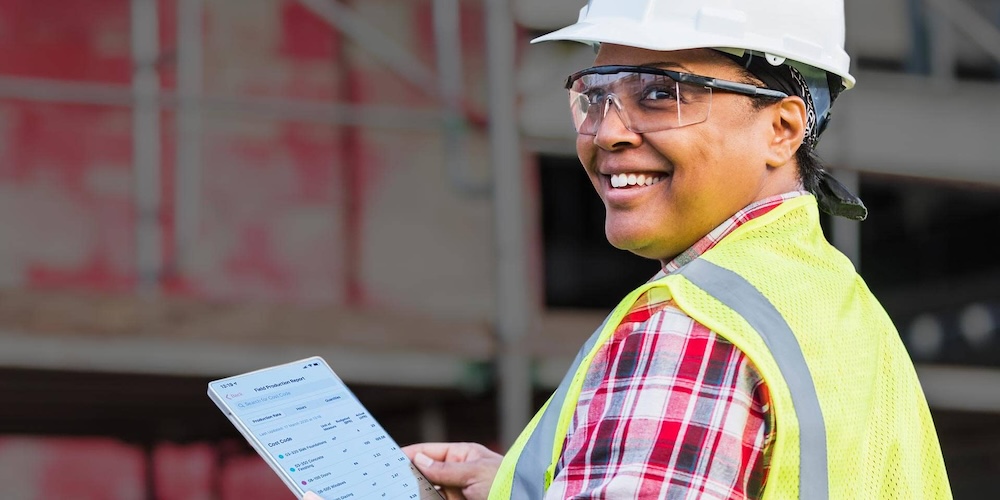— 5 min read
Construction Purchase Order 101: Your Ultimate Guide to PO
Last Updated Jan 29, 2024

Construction purchase orders are key financial elements of an overall project contract. In construction specifically, a purchase order (PO) is typically validated by two parties: the buyer and seller. The buyer (usually an owner or main contractor) issues a PO to the seller (usually a main contractor or speciality contractor) to cover the cost of the project.
The document outlines the price and quantity of goods or services necessary to complete the project contract as agreed upon by both parties.
Contents
Table of contents
Information in a Construction Purchase Order
In order to illustrate the contents of a construction purchase order and how they are relevant to the completion of a project, let’s use a hypothetical scenario featuring Jane and John. Let’s say Jane is a project manager for a main contractor (MC) hired to build a warehouse, while John is a concrete contractor who won the tender to pour the foundation of that warehouse.
Description of Deliverables
Upon receiving the tender for the concrete pour, John and his team visit the site. They identify the tools, equipment, materials and labour needed to complete the project. Once he relays that information to the MC, Jane’s team will draft a PO for the deliverables outlined by John and his team.
Number of Deliverables
As Jane’s team is drafting the PO, they have to be diligent with listing the quantities for each deliverable provided by John. This is important because a PO explicitly states the MC’s fiscal responsibility for the deliverables needed to complete the work expected of the speciality contractor. This document, therefore, protects both parties by ensuring that:
- The MC receives the amount and quality of work requested.
- The SC gets paid for the items needed to complete the work requested.
Agreed-Upon Cost
As Jane’s team lays out the itemised list of deliverables requested by John’s team, the two parties will agree on a cost per item and possible discounts for certain quantities of those items.
Terms of Payment
The terms of payment for a construction purchase order are usually based on credit. The MC sends the PO to the SC to request a service on credit. This protects the MC in the event that payment is given before the completion of the project.
The terms of payment can also be set in regards to a net payment term. It defines how many days after a payment application is submitted the buyer has to make the payment. In this scenario, we will say that Jane approves a PO with a net 30 term, which means John will be paid within 30 days of submitting a payment application for the completed work.
Due Dates
Now that the parties have agreed to the terms of payment, Jane and Johns’ teams will decide on due dates for the deliverables requested in the PO. These dates will inform the date of delivery of those deliverables.
Method of Delivery
One of John’s deliverables in the PO is an extra concrete mixer that has to be shipped from out of the county. The delivery method for that mixer will typically be defined as one of two FOB (Free On Board) shipping terms: FOB Shipping Point (or FOB Origin) and FOB Destination. If “FOB Origin” is agreed upon, the MC will become responsible for any loss or damages incurred to the mixer as soon as it leaves the warehouse and is in transit to the job site. If “FOB Destination” is agreed upon, the SC will be responsible for any damage incurred to the mixer until it reaches the job site.
Reference Numbers
The reference number is one of the most important pieces of the construction purchase order—it helps track the document. Since a project can have hundreds of PO’s attached to it, they can commonly become lost or jumbled during a project’s lifetime. The only way to prove that a service or material was completed or delivered as requested is to be able to locate the respective PO by its reference number.
Purchase Order vs Payment Application
There is one main difference between a construction purchase order and a payment application: A PO is submitted by the buyer (Jane the MC) to determine the cost of a contract before the work is completed. In contrast, a payment application is submitted by the seller (John the SC) after the work is completed to receive an agreed-upon payment.
Construction PO vs Contract
The difference between a construction purchase order and a contract is that a contract is a legally binding document that covers products, agreed prices and payment terms, and conditions for the entirety of a construction project. It includes all necessary purchase orders (documents that outline the price and quantity of goods or services necessary to complete the project contract) and payment applications.
Final Tips for Drafting a PO
A construction purchase order is a key item in a project contract because it’s a legally binding document that protects both the buyer and seller of a product or service. When drafting a PO, it’s important to remember to be explicit and detailed when filling out the following sections:
- Description of deliverables
- Number (or quantity) of deliverables
- Agreed-upon cost
- Terms of payment
- Due dates
- Method of delivery
- Reference Numbers
Categories:
Tags:
Written by
Explore more helpful resources

Understanding the 6 Phases of Project Management in Construction
Every construction project is unique, having different participants, variable conditions and one-off requirements. But across them all, you’ll find construction project phases are strikingly similar. The construction phases of a...

Snag Lists in Construction: Getting to Zero
When you’re managing a construction project, it can feel like the tasks never end. New issues arise that need to be tackled, and then there are old tasks that sneak...

How to Win a Tender
When it comes to developing a winning tender, there is no magical prescription that works for every project. Each owner values different features of a tender: Some focus only on...

Preliminaries in Construction: A Guide for UK Contractors
All costs in a construction tender or contract will fall into one of two categories: Those that arise from specific work sections (i.e. direct costs), and those that are a...